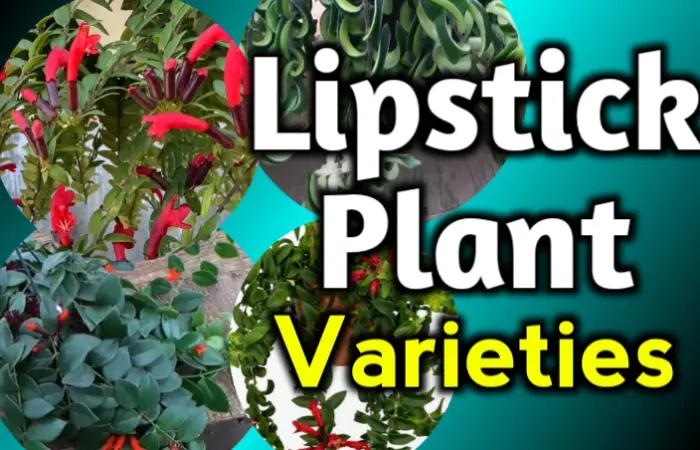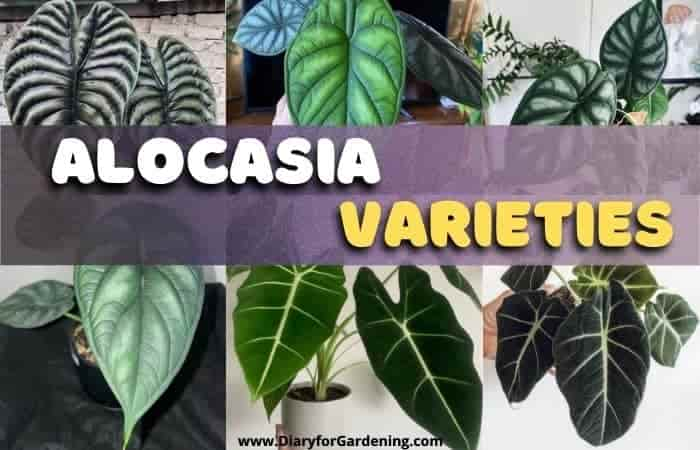Alocasia zebrina care, propagation-All you need to know
If you are an admirer of Alocasia zebrina, eager to have one but not buying it just because you don’t know how to handle it.
You can get a happy zebrina just by mimicking its original habitats like filtered light, consistent moisture and warm temperature ranging from 18-25ºC. Apart from these, repotting should be done every two to three years to avoid root rot conditions as you’re using it as an indoor plant.
Here, in this article, you will get all the necessary information regarding the care of alocasia zebrina including its propagation method. So keep scrolling and grab what you need.
Alocasia Zebrina overview
| Scientific name | Alocasia zebrina |
| Family | Araceae |
| Common name | zebra plant, zebra alocasia, elephant ear zebrina |
| Origin | tropical regions of the Philippines and other parts of East Asia |
| Plant height | As tall as 3 feet. |
| Leaf | Black color leaf without stripe |
| Stem | Zebra pattern strip along thin stem |
| Sunlight | Bright indirect light |
| Watering | Once a week |
| soil | Well-aerated, nutrient-rich soil |
| Humidity | 70% |
| Temperature | 18-25ºC |
Where to buy Alocasia zebrina?
You can find Alocasia zebrina in the nearby nurseries and plant shops. But if you don’t want to go to the shop you can browse the Internet, specifically big platforms like Etsy and Facebook Marketplace.
For your ease, I am mentioning reliable websites where you can get your favorite alocasia wentii while sitting at home but in that case, you may have to pay an extra charge for packaging.

The price range will vary from $12.99 to $32.50
Alocasia zebrina care guide
If you want your alocasia zebrina with the striking, zebra-patterned leaf stems that the plant is named for, you have to take proper care of your plant. Alocasia zebrina has particular needs regarding water, temperature, and humidity. Try to provide a tropical rainforest vibe so that it can thrive without any difficulty.
Alocasia zebrina light requirement
Alocasia zebrina thrives well under bright indirect light. Being a tropical plant it loves a lot of sunlight on a daylight basis but can’t withstand intense or direct light sunlight. The ideal location to place your alocasia is usually south, west, or easy-facing windows where it gets plenty of dappled sunlight.
Watering guide for alocasia zebrina
Watering once a week is enough for A. Zebrina. It requires regular watering during its active growth period. When the plant goes dormant in winter, you should reduce watering frequency. Overwatering causes root rot. Also, these tropical plants don’t do well with long periods of dryness, which leads browning of leaf tips and margins.
Which soil is best for alocasia zebrina
Alocasia zebrina loves moisture but doesn’t prefer soggy soil and standing water which can result in root and corm rot. Well-aerated, nutrient-rich growth media with a proper drainage facility is suitable for this plant. Choose a pot with a drainage hole. a basic soil mixture for zebrina plant, as well as for other tropical houseplants:
- 2 parts high-quality houseplant potting soil
- 2 parts perlite
- 1 part fine orchid bark
Temperature for Alocasia zebrina
Alocasia Zebrina will thrive in temperatures ranging from 18-25ºC.
The Zebrina houseplant doesn’t like cold as it could result in the leaves falling off, so try as much as possible to provide a safe, warm temperature. Don’t place it near the heater or AC otherwise, it will get dehydrated.
Humidity for Alocasia zebrina
Ideal humidity for Alocasia zebrina, as well as most other tropical houseplants, is around 70%; should not be below 50%.
you can consider using a humidifier or pebble tray with water if the air isn’t quite humid enough. But don’t keep your plants near open windows, air conditioners, and vents where cold breezes may come in and affect your alocasia.
Best fertilizer for Alocasia zebrina
Alocasia zebrina is a heavy feeder, During its active growing months (spring and summer) regular application of a diluted liquid houseplant fertilizer will help your Alocasia zebrina to thrive. Apply fertilizer on fortnightly basis.
Don’t fertilize during the inactive winter months, as your Alocasia remains dormant. You’ll just end up damaging the roots by doing so.
Alocasia zebrina propagation
Alocasia zebrina can be easily propagated in two ways: through root division and from growing corms.
Through root division
Removal of mother plant: Take the plant out of its pot and gently remove any excess soil from the roots.
Separation of the tubers: Using a sharp and disinfected knife, divide the bulb without damaging their root system.

Plant the tubers: Pot the newly separated tubers in a well-draining potting mix and water thoroughly. Place the plants in a location that receives bright, indirect light.
From growing corm
Taking the corm out: Dig around in the soil for small corms and carefully cut the corms from the roots at the base of the corm. The corms should be firm and round.
Planting the corm: Place the corm in a container with moistened sphagnum moss. Put a small resealable plastic bag over the container and close it to create a greenhouse-like environment, and place the container in a location that receives bright indirect light.

How to repot alocasia zebrina?
Repot your zebrina every 2-3 years to avoid the rootbound condition. To repot your plant-
- Water your plant to make the soil soft
- Remove the plant from the old pot,
- Remove excess soil,
- Add a layer of expanded clay to the bottom of a larger pot
- Place your plant in
- Finally, cover your plant with high-quality soil
Why are my Alocasia zebrina plant’s leaves turning yellow?
Overwatering is the main cause of leaf yellowing. Excessively moist soil results in root rot. In fact, too much watering is the most dangerous thing you can do to your plant. Other than this, A. zebrina leaves turning yellow may also occur in response to the cumulative effect of
- Nutrient deficiencies
- Disease
- Too much light
Why are my alocasia zebrina plant leaves curling?
Curling leaves are usually an indication that your Alocasia zebrina is experiencing a lack of moisture or humidity. Ensure that you don’t allow your plant to dry out too much between waterings, and keep it away from drafty windows or air vents that can dry out the air.
Why are my alocasia zebrina plant leaves drooping?
Underwatering is the main reason for leaves dropping. It is a good indication that your plants are not having sufficient moisture. Apart from this-
- Lack of light
- Overwatering
- Lack of humidity
- Root rot
- Dormancy
Are all possible causes for dropping leaves.
Alocasia zebrina vs Alocasia baginda ‘dragon scale’
Alocasia zebrina has large, arrowhead-shaped leaves that are glossy and dark green; its zebra-striped stems draw everyone’s attention. Alocasia baginda ‘dragon scale’ is a lovely evergreen plant with an oval shape and large silver-green foliage. A darker vein can be found near the top of the leaf; such an appearance resembles a dragon’s scale.
Alocasia zebrina vs Alocasia amazonica Polly
Alocasia Polly is a beautiful plant and very easy to recognize its eye-catching foliage: is arrow-shaped and very dark green with lighter, creamy green midribs. On the other hand, Alocasia zebrina features 4-5 upright, arrowhead-shaped black with solid and reticulated leaves which can be easily distinguished from all other Alocasia species.
Alocasia zebrina vs Alocasia wentii
Alocasia Wentii has beautiful heart-shaped, glossy green leaves with prominent veins and a contrasting metallic maroon reverse. And alocasia zebrina has long slender stalks with arrow to heart-shaped leaves, but it is unique for its zebra-striped stem.
Is Alocasia zebrina toxic?
Like many other houseplants of the Alocasia genus, alocasia wentii contains insoluble calcium oxalates, which can cause intense burning in the mouth and surrounding areas. In severe cases, it may kill your pets. Hence, it’s important to take caution when bringing this plant indoors.
Why should I choose alocasia zebrina as a houseplant?
The genus, alocasia is full of spectacular plants, but a few of them stand out. Alocasia zebrina is one of those: Its large size, arrow-tip leaves and striped stems make this species truly impossible to overlook. Other than its appearance its maintenance is also straightforward which makes it a must-have one.
Is alocasia zebrina rare?
The Zebrina Alocasia houseplant is listed as a threatened or endangered plant species in the Philippines, making it illegal to collect the plant species in the country. But you may order them from renowned nurseries and from plant-selling websites.
Final thoughts
Growing and caring for Alocasia Zebrina is not an easy task especially when you are using it as a houseplant. These stunning indoor plants require a lot of attention, the right environment, and a proper care routine to flourish. You will get a good result only by providing it with an environment similar to its origin.
- Bright indirect sunlight
- Well-aerated soil having plenty of foods
- Warm humid growing condition
- Space for root to expand






